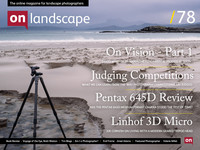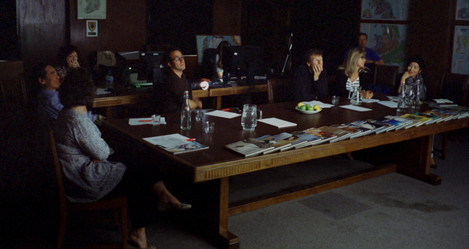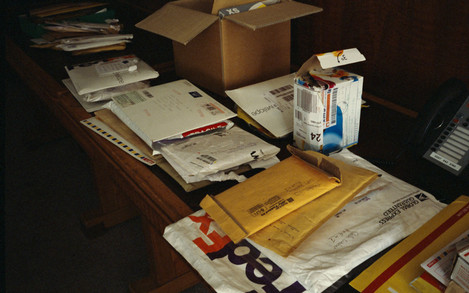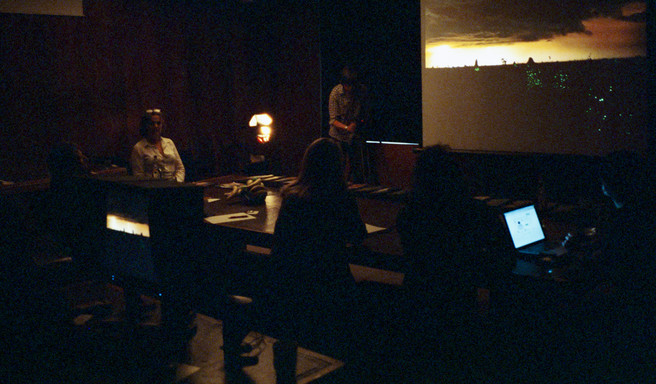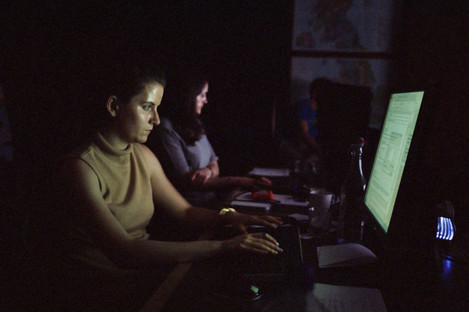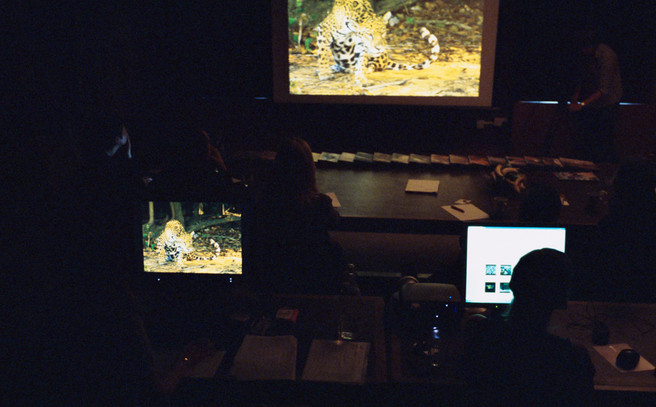Tim shares recent experiences in judging competitions to help improve your hit rate

Tim Parkin
Amateur Photographer who plays with big cameras and film when in between digital photographs.
The process of judging photographic competitions is something that I have been interested in for some time. Many of you will remember my various rants about photographic competitions in the past and also some of my writing about how to suggest a better competition. Well the fact is that I never started that ‘better competition’ and maybe never will, but I am still interested in seeing how these competitions work and also thinking about ways to possibly improve them.
Recently I was asked to judge two competitions, the Environmental Photographer of the Year and the Wildlife Photographer of the Year. Both competitions had an enormous number of entries and for the Wildlife Photographer of the Year my role was mostly to do with technical judging so I was able to look at the process of judging from the outside to see how group dynamics and the image selection process worked.
Firstly I should give you a bit of detail about how many images a competition like this attracts. The Wildlife Photographer of the Year attracted over 40,000 entries and the Environmental Photographer of the Year attracted just under this number. Each competition had approximately eight judges and the judging process took between one and four days.
The Wildlife Photographer of the Year was split into three rounds. The first round was an ‘elimination round’ where each of the judges was given a few categories to look at and whittle the numbers down by about 95%. The second and third rounds involved all of the judges in a room together looking at each of the categories and reducing the numbers again by about another 80%. The final round then picked out the ‘best’ to be shown in the exhibition or included in the book.
The Environmental Photographer of the Year was judged on a single day where every image was looked at by all of the judges in a room together and the top 100 images were selected (we were effectively only ‘approving’ one in one hundred images throughout the day).
The Pace of Judging
The first thing that hits you when you start judging competitions such as this is that things happen fast. Sometimes you only get about one or two seconds to make a decision about an image - yes you didn’t misread that, one or two seconds.
This sounds awful doesn’t it? The work that you’ve put into creating all of your images that you’ve then distilled into just a small selection, perhaps the summation of a lifes work, judged and probably dismissed in the time it takes to say “next”.
But the truth of it is that there isn’t enough time to spend more on each picture. Even at 2 seconds each that works out as a solid 24 hours of ‘next, next, next’ to do the whole lot and obviously you can’t spend more than about 6 hours a day doing this if you want to keep your sanity so even that takes four whole days.
What actually happens is that many images can be dismissed in under two seconds - just think about the last time you looked through a Flickr stream. Try it now if you like, go full screen and then swap images every one or two seconds. It’s actually a reasonable amount of time (twice as long as the average shot length for a feature film such as “Quantum of Solace”).
What this forces on the judges is a different mindset than you might have when looking at a single picture. If you’ve got to get rid of all but one in twenty or more then your mindset is one of “why shouldn’t I reject this image?”.
And so images that are badly processed, images that don’t resolve quickly and images that are ‘cliches’ quickly get binned. Images that don’t catch your attention, images that don’t get past a weariness that comes from 8 hours of staring at a screen, images that you’ve seen again and again and again - all gone.
But there is a little hope - when I said “images that don’t resolve quickly get rejected” it’s not quite true. In fact quite often it’s an image that asks “What’s going on here then” that most often stops the judges - as long as the question is answered fairly quickly with “Ooh! Something interesting” then I can almost guarantee that an image will pass that first round.
Later Rounds
In later rounds there is a bit more time to ponder on images and perhaps the priority now is to work out “Why does this image deserve to be in the finals in comparison with these other images?”. In wildlife this more often than not means subject matter becomes more important. Images that show the same old, same old will quite often get rejected. Images that have a strong ‘narrative’ element get kept.
What do I mean by narrative element? It’s often the obvious story that an image has but it’s also the way that an image has room for the viewer to bring their own story and invites them to do so. An image that manages this will undoubtedly be more appealing than mere representation.
Also in the later rounds the group has more time to talk about an image and hence we get into the realm of group dynamics.
Group Dynamics
Whenever you get more than two people in a group you inevitably end up having some form of group dynamic. Some people are more extrovert, others introvert; some are more charismatic and influential, others less so.
These group dynamics dilute the range of opinions of the group. Ways of mitigating these problems range from including a strong chairperson who is briefed to draw out the opinions of quieter members of the audience to using voting button systems (an idea that I’m strongly in favour of but that isn’t used often as far as I can see).
Fatigue
Spending up to eight hours critically studying images is hard work. At some point decisions start to become reflexive rather than conscious. The result of this is typically that images not fitting the individual judges patterns of ‘good’ will get rejected.
The Landscape Photographer of the Year first round judging last year had a good system whereby each of the three judges chose their selection independently and each of their choices got through to the next round. This ensured that when one person was tired, another may have just come back from a break - each image essentially getting three chances to go through to the next round.
Familiarity and Icons
There are cliches throughout any genre of art and our general point of view is to avoid them but there is also a lot of truth in the fact that they are cliches because they work. However, after you’ve seen fifty different versions of the same cliche or icon you start to get a little bored by it. Typically what happens is that the first decent version of the cliche gets selected during the first round. Once this has been done, any future examples of the cliche need to be substantially better to be included.
In a perfect world you’d be able to go back and pick the best example of all those Durdle Door photos but in reality there is no time and so generally the phrase “we’ve already got one of those” flickers through the judges mind and another rejection occurs.
If you want to tweak the judges interest though, make a brand new version of a cliche - the judge may be surprised enough to be jolted out of the half sleep state they’ve entered and at least give your images a few more seconds consideration.
Consistent Judges
When I have analysed the judging process in the past, one of the key conclusions I came to was that judging is an essentially subjective process. You cannot describe the result as “The best…” but only as “The best, selected by …”. Because of this, having different people judging each round of a competition makes little sense. Images that may have been selected in the first round by a ‘final round judge’ will probably get rejected and hence not even have a chance to win. The Wildlife Photographer of the Year awards this year made sure that the same judges took part in the competition from the very first round. I think this can only improve the consistency of the final selection.
Using This Knowledge
Knowing what I now do about photography competitions I would definitely approach choosing photographs for entry quite differently. I am quite certain that we are probably the least appropriate people to choose the photographs to go into the competition as we have seen most of our images so often and we are so attached to the process of making the images that we are as good as blind to them for these purposes. I would recommend taking a large selection of photograph that you are happy with and allow someone to flick through them in Lightroom or the equivalent or prints and quickly choose the ones that ‘catch their eye’. Don’t let them spend time judging them - only give them a second or so per picture. Once you’ve done this with a few people you should have a good selection that consistently do this. After this you should ditch the cliches and icon shots unless they are exceptionally good and concentrate on the images that look different to those you regularly see on Flickr or elsewhere.
I can almost guarantee that some of your favourite images will be discarded quickly using this process but you have to remember that this isn’t about selecting your best images - it’s about picking images to win a competition - a completely different kettle of fish.
p.s. All pictures taken with Portra 400X pushed to 1600 on a Voigtlander Bessa (very grainy!)
FEATURED COMMENTS FROM:
David Baker: Many thanks for an interesting article Tim. Lensculture has recently published a 'guide' which may assist/add/subtract to the issue: https://www.lensculture.com/../insiders-guide-how-to-get-the-most-out-of-photography-competitions
If you've got any ideas or techniques that you use to help pick 'competition winners' please let us know in the comments below. Or for that matter if you just have any comments about competitions in general.

